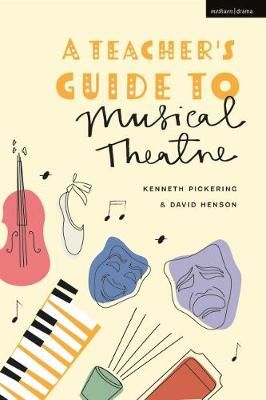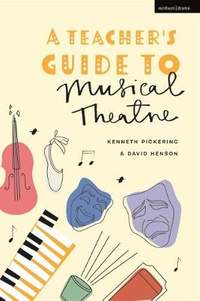
A Teacher’s Guide to Musical Theatre
- Author: Henson, David
- Author: Pickering, Kenneth
Book
$83.50Printed on demand
Contents
- 1. an introduction to the teaching of musical theatre Establishing the principles of effective teaching in this field and emphasising the integrated nature of the subject, this chapter explains how the book may be used in a variety of ways. Each 'lesson
- 2. Lesson One: The Elements of Musical Theatre Using a simple narrative song as an example, this chapter explores and establishes the basic elements and possibilities of musical theatre.
- 3. Lesson Two: What do you mean? Acting in musical theatre. This chapter establishes the concept of 'acting through song' and provides the basis for performance approaches throughout the book.
- 4. Lesson Three: Play the dots? The art and use of accompaniment. The chapter discusses the use of various forms of accompaniment and establishes the best ways for teachers to work with live and recorded music.
- 5. Lesson Four: 'I could have danced all night': What about choreography? What and how do we teach the integration of music, movement and acting? What is the purpose of dance and how has the 'dance musical' evolved? Projects and explorations involving va
- 6. Lesson Five: Where did it all start? Exploring the history of the development of this art form to enable students to place their work in context.
- 7. Lesson Six: The 'Biz'. Here we look at the way in which the theatre often celebrates and explores itself through shows: e.g. 'Cabaret' 'Sweet Charity',' Kiss me Kate', 'A Chorus Line'.
- 8. Lesson Seven: 'Pogroms in the East' Some key historical facts describing the effect of migration from the Opera Houses of Europe to the USA by predominantly Jewish musicians. We then consider the diversity of musical theatre and the influences of blac
- 9. Lesson Eight: Chorus time. Many students regard being cast as a member of the chorus as a disappointment, but the chorus is now an integral 'main character'. This was not always the case. (see Berlioz and his comment on the behaviour of the chorus in
- 10. Lesson Nine: Patter, Hamilton and Gilbert and Sullivan. The recent revival of 'The Mikado' by Jonathan Miller (giving it an 'after life' as he likes to call it) suggests that we ought to reintroduce the work of G and S to a generation that is largely



